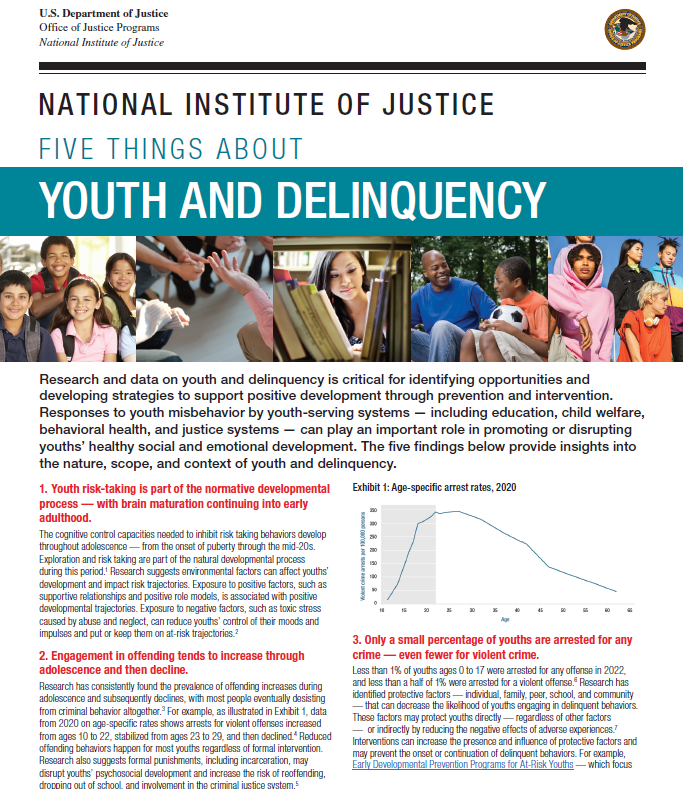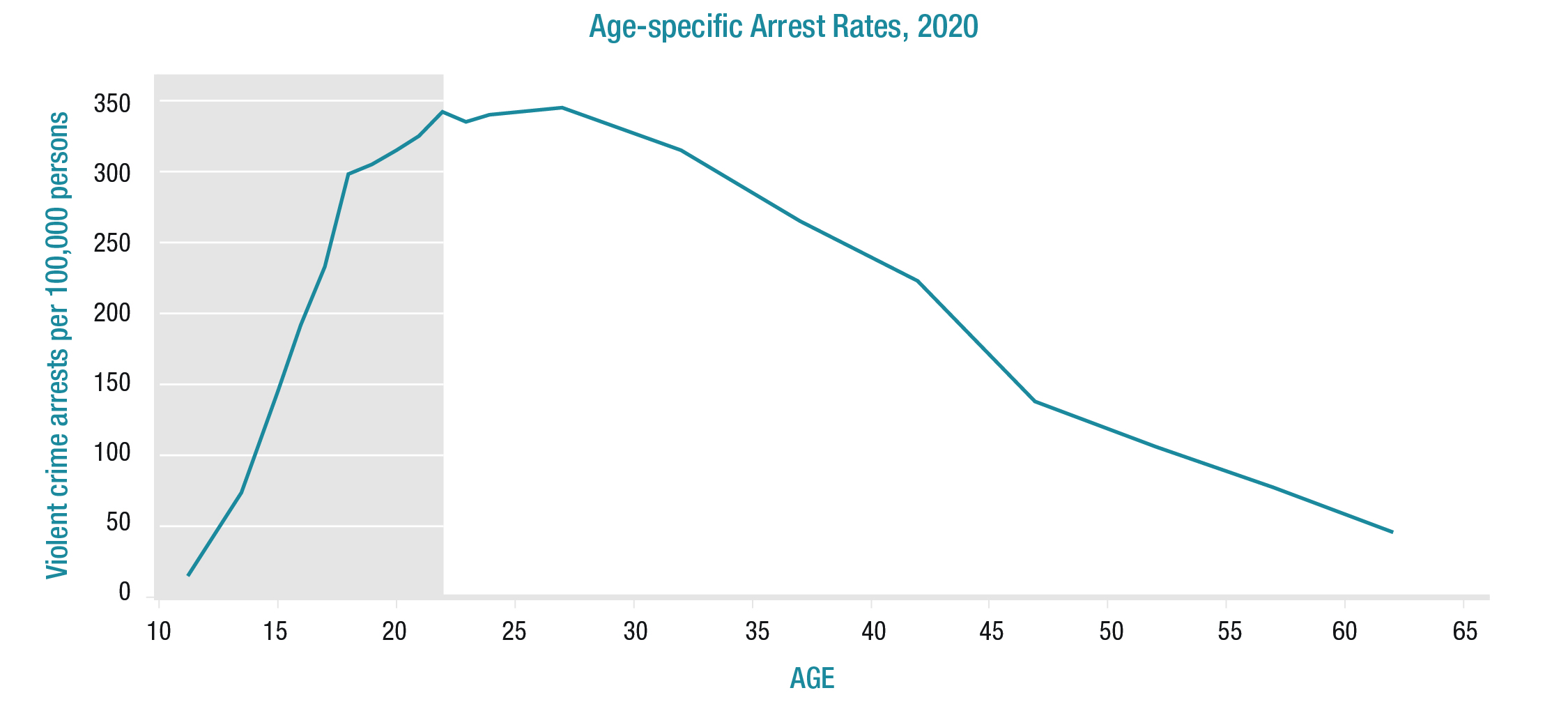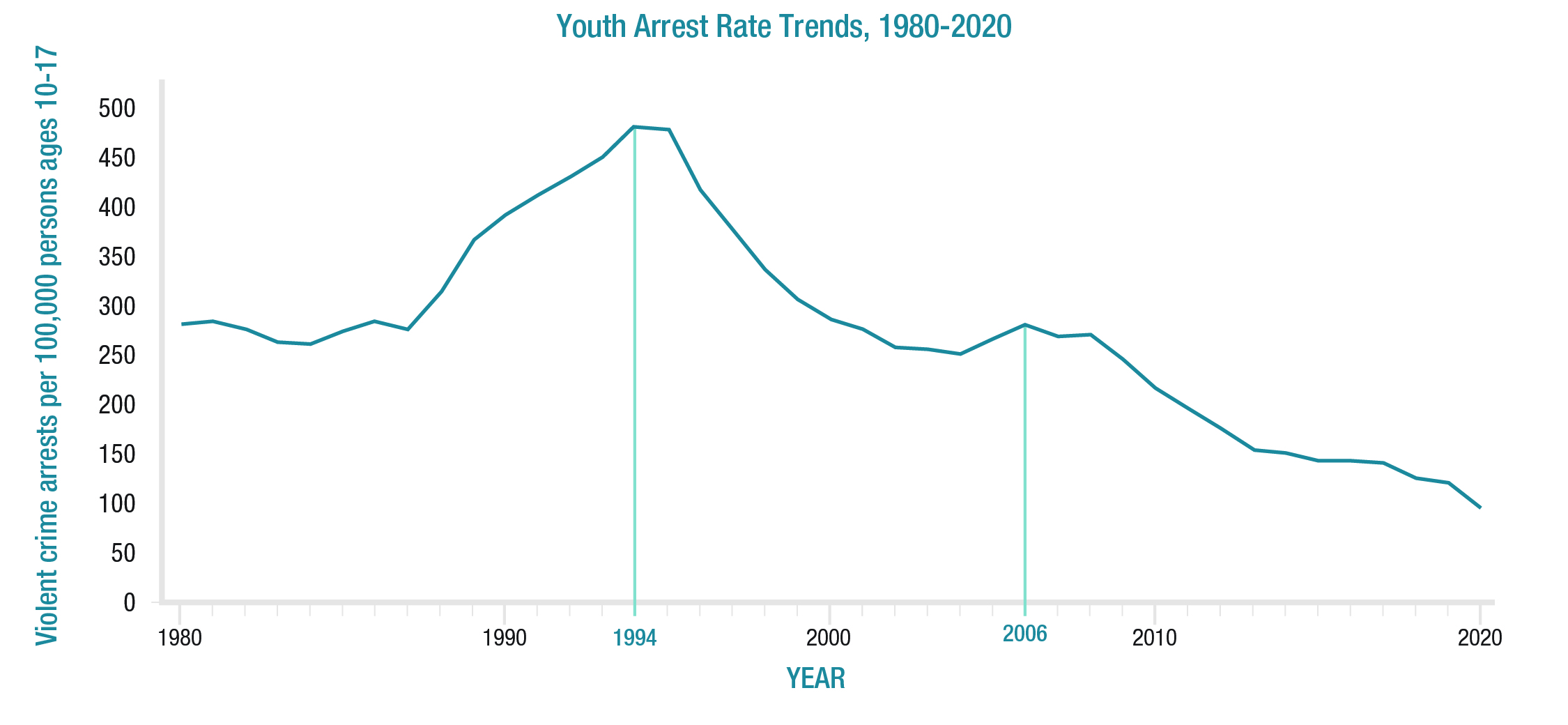Research and data on youth and delinquency is critical for identifying opportunities and developing strategies to support positive development through prevention and intervention. Responses to youth misbehavior by youth-serving systems — including education, child welfare, behavioral health, and justice systems — can play an important role in promoting or disrupting youths’ healthy social and emotional development. The five findings below provide insights into the nature, scope, and context of youth and delinquency.
1. Youth risk-taking is part of the normative developmental process — with brain maturation continuing into early adulthood.
The cognitive control capacities needed to inhibit risk taking behaviors develop throughout adolescence — from the onset of puberty through the mid-20s. Exploration and risk taking are part of the natural developmental process during this period.[1] Research suggests environmental factors can affect youths’ development and impact risk trajectories. Exposure to positive factors, such as supportive relationships and positive role models, is associated with positive developmental trajectories. Exposure to negative factors, such as toxic stress caused by abuse and neglect, can reduce youths’ control of their moods and impulses and put or keep them on at-risk trajectories.[2]
2. Engagement in offending tends to increase through adolescence and then decline.
Research has consistently found the prevalence of offending increases during adolescence and subsequently declines, with most people eventually desisting from criminal behavior altogether.[3] For example, as illustrated in Exhibit 1, data from 2020 on age-specific rates shows arrests for violent offenses increased from ages 10 to 22, stabilized from ages 23 to 29, and then declined.[4] Reduced offending behaviors happen for most youths regardless of formal intervention. Research also suggests formal punishments, including incarceration, may disrupt youths’ psychosocial development and increase the risk of reoffending, dropping out of school, and involvement in the criminal justice system.[5]
Exhibit 1: Age-specific arrest rates, 2020
3. Only a small percentage of youths are arrested for any crime — even fewer for violent crime.
Less than 1% of youths ages 0 to 17 were arrested for any offense in 2022, and less than a half of 1% were arrested for a violent offense.[6] Research has identified protective factors — individual, family, peer, school, and community — that can decrease the likelihood of youths engaging in delinquent behaviors. These factors may protect youths directly — regardless of other factors — or indirectly by reducing the negative effects of adverse experiences.[7] Interventions can increase the presence and influence of protective factors and may prevent the onset or continuation of delinquent behaviors. For example, Early Developmental Prevention Programs for At-Risk Youths — which focus on enhancing child, parent-child, or family well-being — are rated effective by CrimeSolutions at reducing future deviance and criminal justice involvement. For youths who have engaged in delinquent behaviors, justice-system interventions that are based on a therapeutic intervention philosophy (e.g., counseling, skills building), focus on high-risk youths, and have high-quality implementation can be effective at reducing recidivism across all levels of system penetration.[8] For example, Multisystemic Therapy — which is a family- and community-based treatment program targeting youths between the ages of 12 and 17 who present with serious antisocial and problem behavior and with serious criminal offenses — was rated effective by CrimeSolutions for reducing the number of rearrests and the number of days youths were incarcerated.
4. Youth arrests for violent offenses have declined from a historic peak in the mid-1990s.
The estimated number of youth arrests for violent crime — which includes murder, robbery, and aggravated assault — declined 67% from 2006 to 2020 (see exhibit 2).[9] By 2020, violent crime arrests involving youths reached a new low: 78% below the 1994 peak. More recent data from the FBI’s National Incident-Based Reporting System (NIBRS) indicate that youth arrests for violent crimes increased 17% between 2021 and 2022.[10] Nevertheless, trends show that both the number and rate of youth arrests for violent crime remain well below levels in the mid-1990s and the most recent uptick in youth arrests in the mid-2000s. The one-year increase in arrests should be viewed in this historical context and caution is warranted when predicting future patterns.[11]
Exhibit 2: Youth arrest rate trends, 1980-2020
5. The youth contribution to violent crime arrests is less than that from other age groups, including young adults.
The youth proportion of violent crime arrests declined from the mid-1990s (19%)[12] through at least 2020 (7%).[13] Based on data from NIBRS, youths accounted for 9.4% and young adults ages 18 to 24 accounted for 19.9% of all arrests for violent crime in 2022.[14] The youth proportion of arrests and their arrest rates for violent crime varied by offense. For example, young adults were arrested at higher rates for murder and aggravated assault; however, older youths (ages 15 to 17) had higher rates for robbery and carjacking. The National Crime Victimization Survey (NCVS), sponsored by the Bureau of Justice Statistics (BJS), collects victims’ perceptions of the age of individuals who perpetrate offenses. In 2022, 9.3% of violent incidents were perpetrated by individuals perceived to be ages 12 to 17, which did not differ significantly from this age group’s share of the population. Nearly 60% of violent incidents were committed by someone perceived to be age 30 or older and 24% by those ages 18 to 29 — when the age was reported by the victim.[15]




